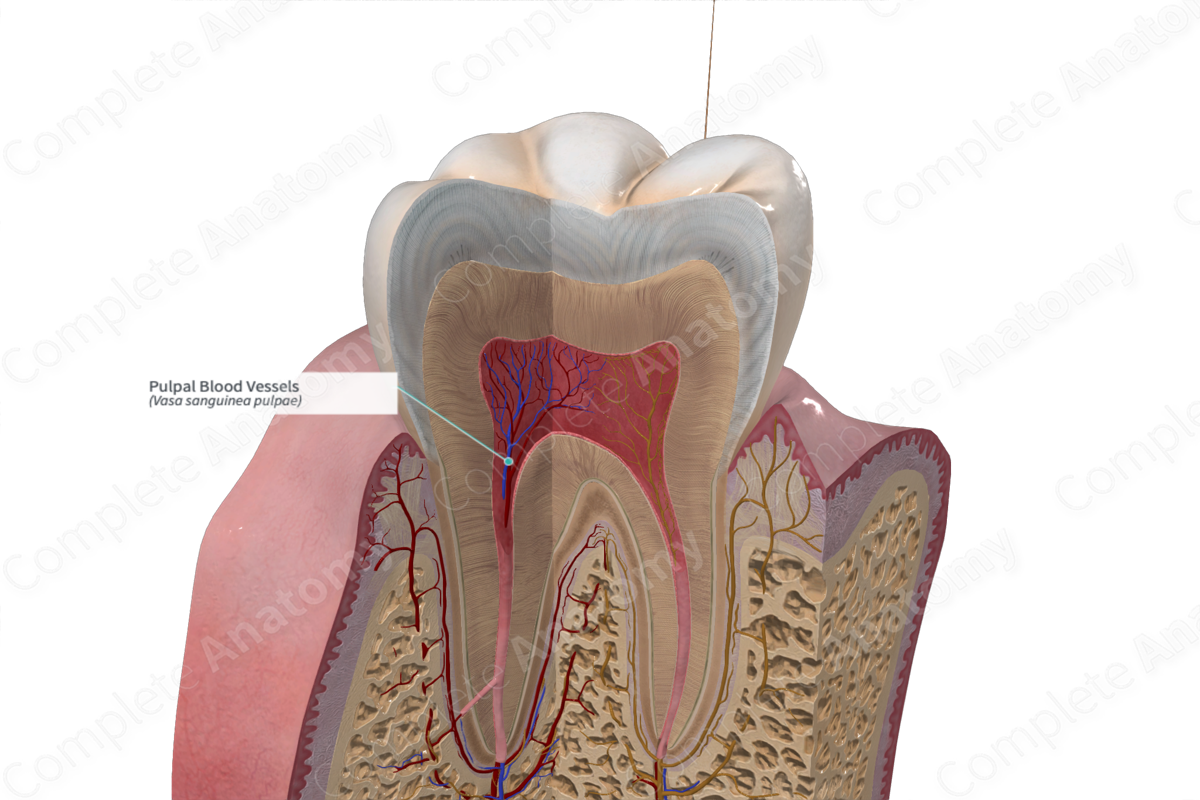
Quick Facts
The pulpal vessels of the mandibular teeth arise from the inferior alveolar artery.
Related parts of the anatomy
Structure and/or Key Feature(s)
The mandible and the mandibular molars and premolars are supplied by the inferior alveolar artery, which passes through the mandibular canal to reach these structures. As the inferior alveolar artery passes through the canal, it branches and enters minute holes at the apex of each root to supply the pulp. Branches of the inferior alveolar artery that travel through the root canal up to the pulp cavity are known as pulpal vessels (Standring, 2016).
Anatomical Relations
The pulpal blood vessels travel longitudinally through the pulp and extensively branch to supply the pulp cavity (Standring, 2016).
Function
The pulpal vessels are small arterioles that provide the dental pulp with a rich blood supply.
References
Standring, S. (2016) Gray's Anatomy: The Anatomical Basis of Clinical Practice. Gray's Anatomy Series 41 edn.: Elsevier Limited.
